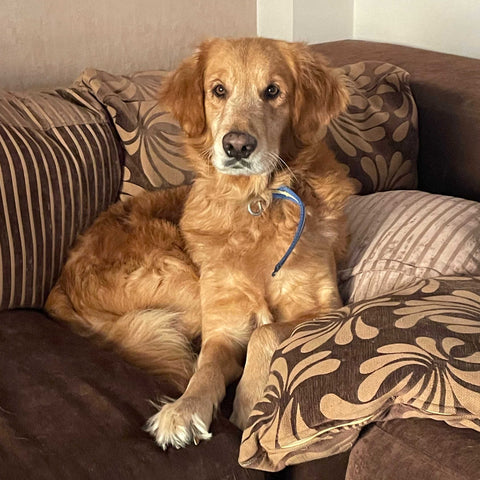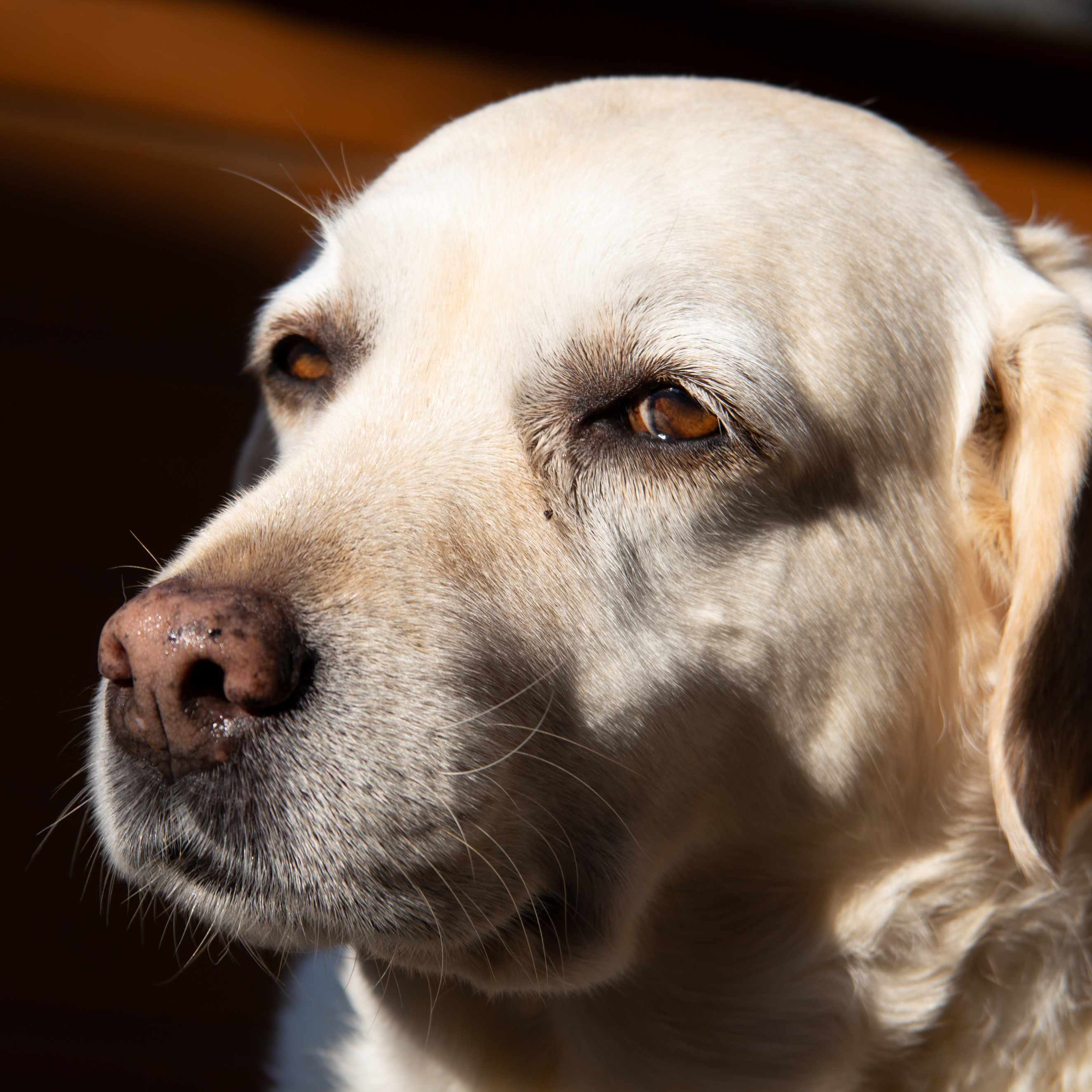Introduction
In a world where our furry companions are an integral part of our lives, their health and well-being are of paramount importance. One significant health concern that affects dogs today is obesity.
The most recent statistics classify the majority of dogs in the U.S.—56%—as overweight or obese. While that makes obesity a major health crisis for dogs, it’s a problem that’s often overlooked, as many pet owners may not even realize their pets are overweight.
The problem of a heavier body weight in dogs has been steadily growing, mirroring the obesity epidemic in humans. In this blog post, we'll delve into the causes, consequences, and solutions for pet obesity, while exploring the ideal healthy weight for our beloved canine friends.

What is Obesity in Dogs?
Obesity can be defined as an excess accumulation of body fat that contributes to disease. Dogs that weigh at least 10% above their ideal body weight are considered overweight, while dogs weighing 20% more than ideal are considered obese. Excess body weight can be a contributing factor in many diseases.
Understanding Dogs and Obesity
Causes of Obesity
Canine obesity is primarily caused by an imbalance between caloric intake and energy expenditure. Several factors contribute to this imbalance:
-
Overfeeding: Providing excessive amounts of food, treats, or table scraps can lead to weight gain over time.
-
Lack of Exercise: Insufficient physical activity reduces a dog's ability to burn calories, leading to weight gain.
-
Breed Predisposition: Certain breeds are genetically predisposed to obesity, such as Labrador Retrievers, Beagles, and Cocker Spaniels.
-
Age and Neutering: Older dogs and neutered/spayed dogs have lower energy requirements, so adjustments in diet and exercise are necessary.
Consequences of Obesity in Dogs
Obesity in dogs comes with significant consequences. In fact, it’s one of our pets’ biggest health threats. And it’s not an isolated issue; obesity is linked to a whole raft of health problems including arthritis, chronic kidney disease, bladder/urinary tract disease, liver disease, low thyroid hormone production, diabetes, heart failure, high blood pressure, and cancer. It’s very important that people understand this isn’t just a cosmetic issue. There is a physiological consequence to this.

Obesity in dogs can have serious health implications, including:
-
Joint Problems: Excess weight puts strain on joints, leading to arthritis and decreased mobility.
-
Cardiovascular Issues: Obesity increases the risk of heart diseases and hypertension in dogs.
-
Diabetes: Just like in humans, obesity is linked to the development of type 2 diabetes in dogs.
-
Reduced Lifespan: Obese dogs generally have shorter lifespans compared to their healthier counterparts.
Determining a Healthy Dog Weight
Factors Influencing Healthy Weight
Determining a healthy weight for your dog isn't a one-size-fits-all approach. Factors that influence the ideal weight include:
-
Breed: Different breeds have different body types and weights. Consult breed-specific weight guidelines.
-
Age: Puppies, adults, and seniors have varied energy requirements, affecting their weight.
-
Size: Small, medium, and large dogs have different healthy weight ranges.
-
Activity Level: More active dogs require more calories to maintain their weight.
Also Read - A Guide to New York City’s Dog Parks
Body Condition Scoring
One effective way to assess your dog's weight is through body condition scoring, which involves evaluating the dog's overall appearance, including ribs, waist, and abdominal tuck. On a scale of 1 to 9, a body condition score of 4-5 indicates a healthy weight, where the ribs are easily felt and the waist is visible.

Combatting Canine Obesity: Solutions and Tips
Balanced Diet
-
Portion Control: Measure your dog's food to avoid overfeeding.
-
High-Quality Food: Choose a balanced, age-appropriate, and species-appropriate diet.
-
Limited Treats: Treats should only constitute a small percentage of daily caloric intake.
Regular Exercise
-
Daily Walks: Engage your dog in regular walks and outdoor play. A dog's daily exercise contributes so much to achieving a healthier life.
-
Interactive Play: Games like fetch or puzzle toys keep dogs mentally and physically active.
-
Swimming: If your dog enjoys water, swimming is a low-impact exercise that's easy on the joints. Most canines are naturally good swimmers.
A Guide for Dog Owners: How to Assess Your Dog’s Weight

The question remains: How can pet owners determine the ideal weight for their dog(s)?
The Rib Test
Stand behind your dog, gently run your hands along either side of the rib cage. You should be able to easily feel, but not see each rib, and your dog should have a waist or a tucked up area in front of the hind legs. If you can pinch more than an inch and/or your dog has lost his waist, it’s probably time to think about reducing their food intake, as excess weight can be dangerous.
The Standing Test
Look at the dog from the side—lean down and look from the side—and see [if] their abdomen or stomach is sagging. Then look from the top: From standing you should see an hourglass indentation in front of the hips. You should see the chest extend out and the waist tapers in making an hourglass.
While dogs vary widely in body shape and volume of hair and fur, this test should work for 95% of dogs (exceptions include English Bulldogs and Pugs).
Consulting a Veterinarian
For a personalized approach to managing your dog's weight, consult your veterinarian. They can help you create a tailored diet and exercise plan based on your dog's individual needs.
Food Matters
Many vets agree that weight loss begins and ends at the food bowl for dogs (and cats.) Based on available literature and information, the weight-loss math is most commonly figured out this way: 60-70% diet and 30-40% exercise.
So, knowing exactly how much to feed your dog becomes key. Some vets are against using the guidelines on most commercial dry dog food packages to determine how much you’re feeding. The parameters, which are based on adult dogs for all life stages, are far too broad to accommodate every dog’s needs, especially those needing to lose weight. For example, spaying or neutering a dog reduces their energy requirement by 20-30%. So already, if you’re feeding according to guidelines you’re at increased risk of overfeeding a pet who is spayed or neutered.
It’s a good idea to work with your vet or a veterinary nutritionist to assess your dog’s canine body condition score, muscle condition, lifestyle and any concurrent medical conditions and determine how many calories you should be feeding. Calorie intake has so much to do with canine body condition.
You can also consult the tools available online (including on APOP’s site) which provide a good estimate of weight ranges and caloric needs by breed and size.
As to food quality, fresh food including lean protein like chicken, turkey, fish, eggs and tofu, and fiber through fresh vegetables such as Brussels sprouts, broccoli, cauliflower, kale, cabbage and spinach are highly recommended.
While some dog owners hesitate around the idea of feeding “people food,” this kind of real, fresh food is more nutrient-dense, and more bioavailable than dried, processed food. Those planning to prepare fresh food at home for any length of time should be sure to consult their vet to ensure meals are correctly balanced and contain the necessary vitamins and nutrients. Subscribing to a fresh-food plan makes it easier, and safer, to feed nutritionally balanced meals.
While food is the biggest factor in losing weight, pet owners should also plan to exercise dogs for a minimum of 20 minutes, twice a day. And be careful with snacks. You can use fresh veggies as healthy treats and avoid processed mystery-ingredient treats and things like pig ears, and bully sticks.
Also Read - The Purr-fect Travel Companion: Tips for Traveling with Your Beloved Cat
Conclusion
As responsible pet owners, it's our duty to ensure our canine companions lead healthy, fulfilling lives. Obesity is a serious issue that demands our attention and action. By understanding the causes, consequences, and solutions surrounding dog obesity, we can pave the way for our dogs to enjoy a longer, happier life at their ideal healthy weight. Remember, a healthy dog is a happy dog!


